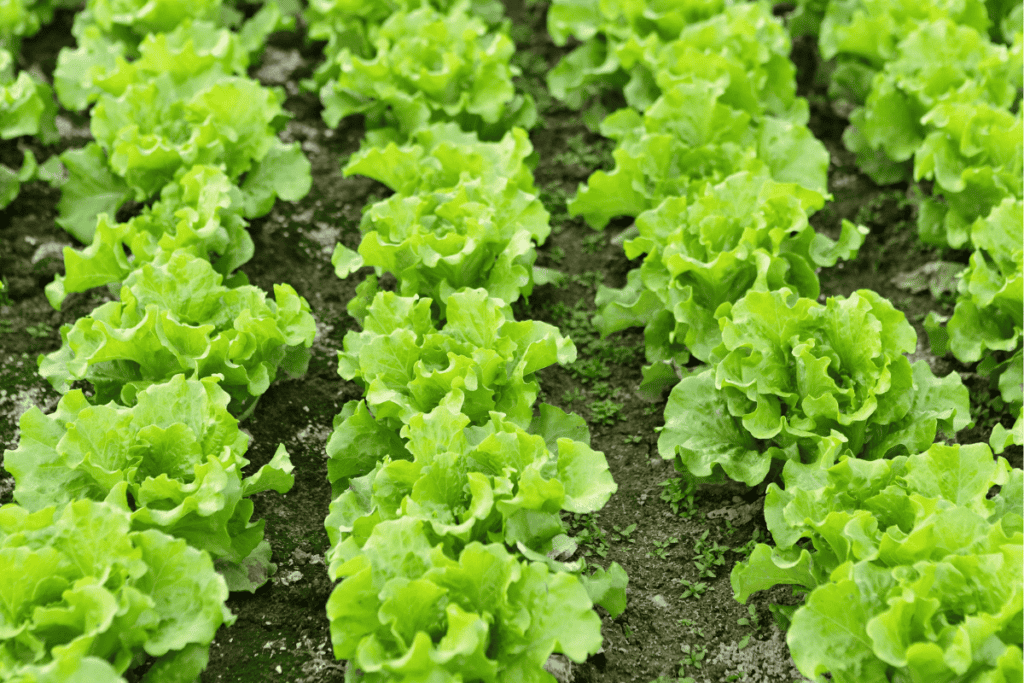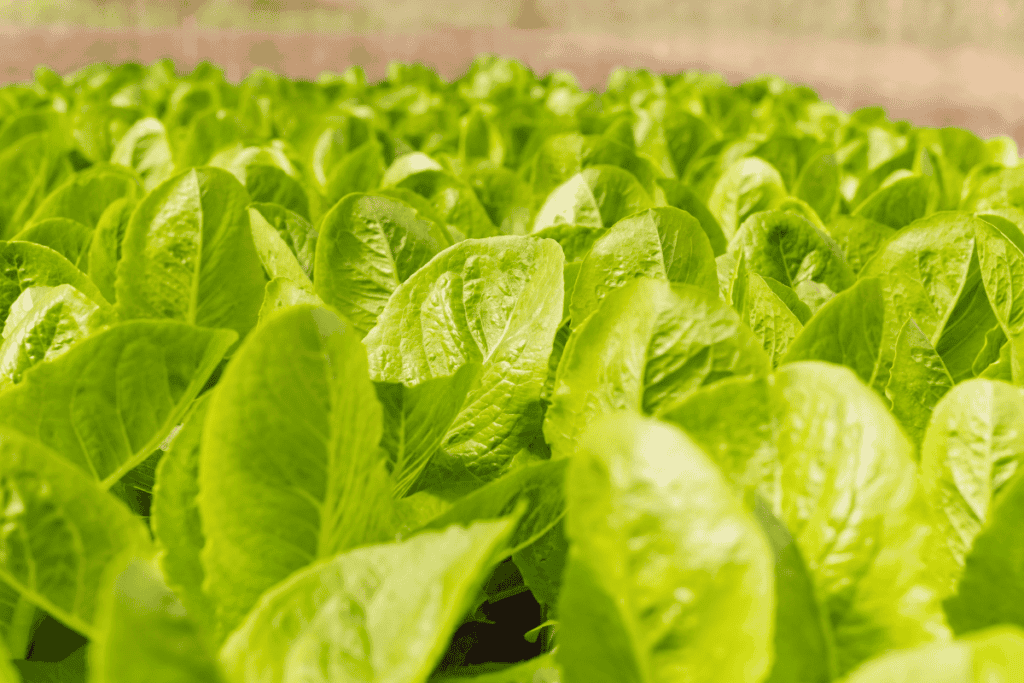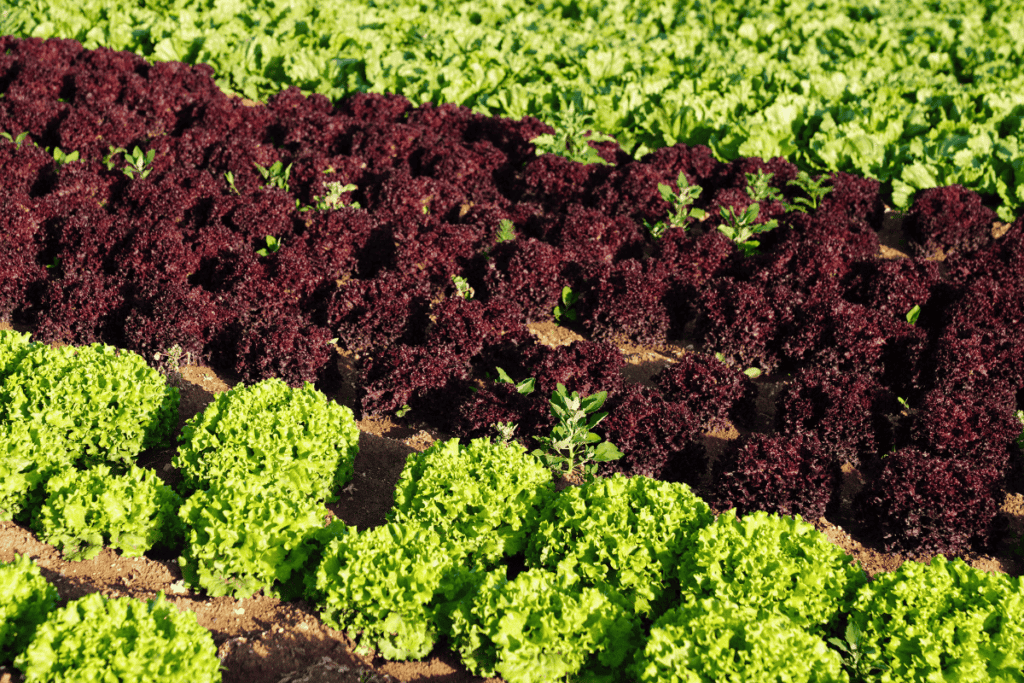Lettuce is a versatile and popular leafy green vegetable that can be grown in various climates and conditions. Whether you’re a beginner gardener or an experienced enthusiast, there’s a lettuce variety suitable for your garden. In this article, What Types of Lettuces Can You Grow? we’ll explore the different types of lettuces you can grow and provide tips for successful cultivation.
Benefits of Growing Lettuces

Before delving into the various types of lettuces, let’s briefly discuss the benefits of growing this nutritious vegetable. Lettuces are rich in vitamins A and K, as well as folate and fiber, making them a healthy addition to any diet. By growing your own lettuces, you’ll have access to fresh, pesticide-free produce right at your fingertips. Additionally, cultivating lettuces can be a rewarding and enjoyable hobby, providing a sense of accomplishment as you watch your plants thrive.
Butterhead Lettuce
Description and Characteristics
Butterhead lettuce, also known as Bibb or Boston lettuce, is prized for its tender leaves and delicate flavor. This variety forms loose heads with soft, buttery-textured leaves that range in color from pale green to reddish-brown. Butterhead lettuce is ideal for salads and sandwiches, adding a crisp and refreshing element to your dishes.
Growing Tips
To grow butterhead lettuce, choose a location with partial shade and well-draining soil. Sow seeds directly into the ground or start seedlings indoors before transplanting them outdoors. Keep the soil consistently moist and provide adequate airflow to prevent diseases. Harvest butterhead lettuce when the heads feel firm and compact, typically within 50 to 70 days after planting.
Romaine Lettuce

Description and Characteristics
Romaine lettuce, also known as cos lettuce, is characterized by its tall, upright heads and crisp leaves. This variety has a slightly bitter flavor and a crunchy texture, making it popular in Caesar salads and wraps. Romaine lettuce is rich in nutrients, including vitamins C and K, making it a nutritious addition to your meals.
Growing Tips
To grow romaine lettuce, choose a sunny location with well-draining soil. Sow seeds directly into the ground or start seedlings indoors before transplanting them outdoors. Water consistently to keep the soil evenly moist, but avoid overwatering, as this can lead to rotting. Harvest romaine lettuce by cutting the heads at the base when they reach full size, typically within 60 to 85 days after planting.
Loose-Leaf Lettuce

Description and Characteristics
Loose-leaf lettuce, as the name suggests, does not form heads but instead produces loose clusters of leaves. This variety comes in a range of colors, including green, red, and purple, and has a mild, sweet flavor. Loose-leaf lettuce is easy to grow and can be harvested continuously by picking individual leaves as needed.
Growing Tips
To grow loose-leaf lettuce, choose a location with partial shade and well-draining soil. Sow seeds directly into the ground or in containers, spacing them evenly to allow room for growth. Water regularly to keep the soil consistently moist, and fertilize lightly every few weeks to promote healthy growth. Harvest loose-leaf lettuce by snipping the outer leaves with scissors, allowing the inner leaves to continue growing.
Crisphead Lettuce

Description and Characteristics
Crisphead lettuce, also known as iceberg lettuce, is prized for its crisp texture and mild flavor. This variety forms tight, compact heads with pale green leaves and is commonly used in salads and sandwiches. Crisphead lettuce requires cooler temperatures to thrive and is best suited for growing in the spring and fall.
Growing Tips
To grow crisphead lettuce, choose a sunny location with well-draining soil. Sow seeds directly into the ground or start seedlings indoors before transplanting them outdoors. Water consistently to keep the soil evenly moist, and provide ample airflow to prevent diseases. Harvest crisphead lettuce by cutting the heads at the base when they feel firm and compact.
How to Choose the Right Lettuce for Your Garden
When selecting lettuce varieties for your garden, consider factors such as climate, soil conditions, and personal preferences. Some varieties, such as butterhead and loose-leaf lettuce, are well-suited for growing in containers or small spaces, while others, like romaine and crisphead lettuce, require more room to spread out. Additionally, pay attention to the days to maturity listed on seed packets or plant tags, as this will help you plan your planting schedule accordingly.
Tips for Growing Lettuces Successfully
To ensure a bountiful harvest of lettuces, follow these tips for successful cultivation:
- Start with healthy, disease-resistant seedlings or seeds from reputable suppliers.
- Plant lettuces in fertile, well-draining soil amended with compost or organic matter.
- Provide consistent moisture by watering regularly, especially during hot weather.
- Mulch around lettuce plants to retain soil moisture and suppress weeds.
- Protect lettuces from pests such as slugs, snails, and aphids by using row covers or natural deterrents.
- Rotate lettuce crops annually to prevent the buildup of diseases and pests in the soil.
Harvesting and Storing Lettuces
Lettuces can be harvested at any stage of growth, from baby greens to mature heads. To harvest loose-leaf and butterhead lettuces, simply snip individual leaves as needed, allowing the plants to continue growing. For romaine and crisphead lettuce, wait until the heads feel firm and compact before cutting them at the base. After harvesting, store lettuces in the refrigerator in a perforated plastic bag for up to two weeks.
Common Pests and Diseases
Lettuces are susceptible to various pests and diseases, including aphids, slugs, snails, and fungal infections. To prevent problems, practice good garden hygiene by removing debris and weeds, and inspect plants regularly for signs of pests or disease. Additionally, avoid overhead watering, which can promote the spread of fungal spores. If necessary, use organic pest control methods such as neem oil spray or insecticidal soap to deter pests without harming beneficial insects.
Conclusion What Types of Lettuces Can You Grow?
Growing lettuces in your garden can be a rewarding experience, providing you with fresh, nutritious greens right at your fingertips. By choosing the right varieties for your climate and soil conditions and following proper cultivation techniques, you can enjoy a bountiful harvest of crisp, flavorful lettuce all season long. Whether you prefer the tender leaves of butterhead lettuce or the crunchy texture of romaine, there’s a lettuce variety to suit every palate. So roll up your sleeves, dig in the dirt, and start growing your own lettuce today!
FAQs What Types of Lettuces Can You Grow?
How long does it take for lettuce to grow?
Lettuce typically takes between 45 to 85 days to reach maturity, depending on the variety and growing conditions.
Can I grow lettuce indoors?
Yes, lettuce can be grown indoors in containers or pots placed near a sunny window or under grow lights.
What is the best time to plant lettuce?
Lettuce is a cool-season crop that thrives in temperatures between 45°F to 75°F (7°C to 24°C). Plant lettuce in early spring or late summer for best results.
How often should I water lettuce?
Lettuce requires consistently moist soil, so water regularly, especially during hot weather. Avoid overwatering, as this can lead to root rot.
What can I do with excess lettuce from my garden?
Excess lettuce can be shared with friends and neighbors, donated to local food banks, or preserved by freezing or drying for later use.
Latest Posts
- What Types of Lettuces Can You Grow?

- How to Plant Onion Seeds for Maximum Germination

- How to Plant Parsnip Seeds for Maximum Germination

- How to Plant Mushroom Seeds for Maximum Germination

- How to Plant Lettuce Seeds for Maximum Germination

- How to Plant Kale Seeds: A Step-by-Step Guide to Maximum Germination Success!




